Dihydromyricetin
- CAS NO.:27200-12-0
- Empirical Formula: C15H12O8
- Molecular Weight: 320.25
- MDL number: MFCD00189451
- EINECS: 200-001-8
- SAFETY DATA SHEET (SDS)
- Update Date: 2025-01-27 09:38:02
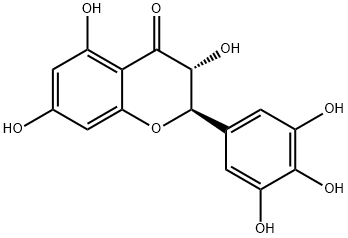
What is Dihydromyricetin?
Description
Dihydromyricetin (DHM), also known as ampelopsin, is a natural flavonoid compound, which is found in large quantities in Asian plant species. One of them – Hovenia dulcis – is known for centuries in traditional Chinese medicine as a cure for alcohol poisoning and hangover (Liang et al. 2014). DHM is sold as a supplement and is commonly marketed as a treatment for hangovers due to its ability to reduce blood alcohol levels and projected hepatoprotective properties.
Dihydromyricetin had beneficial effects on health such as antimicrobial, anti-inflammatory,antioxidative, anticancer, lipid and glucose metabolism-regulatory activities,and cell death-mediating without or with minimum adverse effects on normal cells. And most importantly, DHM has been shown to provide significant hepatoprotective effects. Its positive influence on alcohol-induced and other liver diseases was suggested in the study of acute liver failure (Liu et al. 2017).
The Uses of Dihydromyricetin
Dihydromyricetin has been used to study its effect on adipogenesis and glucose uptake in differentiated 3T3-L1 pre-adipocytes. It has also been used to study its antitumor activity against liver cancer cells.
Definition
ChEBI: (+)-dihydromyricetin is an optically active form of dihydromyricetin having (2R,3R)-configuration. It has a role as a metabolite, an antioxidant and an antineoplastic agent. It is a secondary alpha-hydroxy ketone and a dihydromyricetin. It is an enantiomer of a (-)-dihydromyricetin.
Benefits
Dihydromyricetin (DHM) relieves alcohol toxicity and prevents intoxication by limiting the absorption of alcohol in the gastrointestinal tract and promoting the metabolisation of alcohol in the liver. DHM is a promising compound for kidney protection, liver protection, and neurological protection when drinking alcohol.
DHM benefits can include things like:
relieve hangover
relieve anxiety
cardioprotective properties
protect the liver
Biochem/physiol Actions
Dihydromyricetin (Ampelopsin) is a flavanonol with antioxidant and anti-cancer activity, found to have anti-alcohol intoxication effects. Its anti-alcohol effects appear to be by its actions as a positive modulator of GABA-A receptors at the benzodiazepine site.
Side Effects
Dihydromyricetin has been used in Asia for thousands of years as a hangover cure and anti-intoxication medicine and is considered safe for humans even in massive doses.
In a DHM toxicity study, researchers failed to find any side-effects while giving mice massive doses of up to 22g/kg body weight.
Acute toxicity tests showed that a single dose of oral SHE up to 22 g/kg did not result in any death or toxic side effects in mice during 14 days'observation.
Conversions from rat to human pharmacology can be estimated using the HED ratio of 16%, giving DHM a safe upper limit dosage of 15.68g for a 70kg person.
Properties of Dihydromyricetin
| storage temp. | -20°C |
| solubility | DMSO: ≥5mg/mL (warmed) |
| form | powder |
| Boiling point: | 780.7±60.0 °C(Predicted) |
| Density | 1.808±0.06 g/cm3(Predicted) |
| Melting point: | 239-241 °C |
| pka | 7.38±0.60(Predicted) |
| color | white to beige |
| Stability: | Hygroscopic |
| InChI | InChI=1S/C15H12O8/c16-6-3-7(17)11-10(4-6)23-15(14(22)13(11)21)5-1-8(18)12(20)9(19)2-5/h1-4,14-20,22H/t14-,15+/m0/s1 |
| CAS DataBase Reference | 27200-12-0 |
Safety information for Dihydromyricetin
Computed Descriptors for Dihydromyricetin
| InChIKey | KJXSIXMJHKAJOD-LSDHHAIUSA-N |
| SMILES | [C@H]1(C2=CC(O)=C(O)C(O)=C2)OC2=CC(O)=CC(O)=C2C(=O)[C@@H]1O |
Dihydromyricetin manufacturer
SETV ASRV LLP
New Products
1-Amino-1-cyclohexanecarboxylic acid Cycloleucine N-Boc-2-bromoethylamine 3-Morpholino-1-(4-nitrophenyl)-5,6-dihydropyridin- 2(1H)-one N-octanoyl benzotriazole ELECTROLYTIC IRON POWDER 1,1’-CARBONYLDIIMIDAZOLE R-2-BENZYLOXY PROPIONIC ACID 1,1’-CARBONYLDI (1,2-4 TRIAZOLE) 1-(2,4-DICHLOROPHENYL) ETHANAMINE 3-NITRO-2-METHYL ANILINE 9-methyl-9-azabicyclo [3.3.1] nonan-3-amine 1-Aminocyclobutanecarboxylic acid 1-(2-Ethoxyethyl)-2-(piperidin-4-yl)-1H-benzo[d]imidazole hydrochloride 4-Bromopyrazole 1-Boc-4-cyanopiperidine 5-BROMO-2CYANO PYRIDINE (R)-5-(2-aminopropyl)-2-methoxybenzenesulfonamide 5,6-Dimethoxyindanone Tert-butyl N-(pent-4-yn-2-yl) carbamate TETRABUTYLAMMONIUM CYANIDE Cyclopropanamine hydrochloride 4-methoxybenzylbromide 3-Iodo-6-nitroindazoleRelated products of tetrahydrofuran

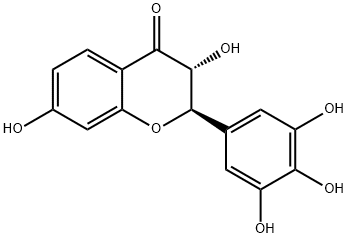
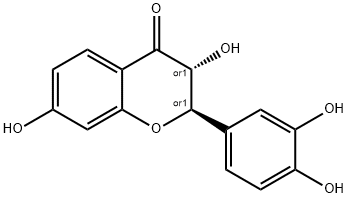
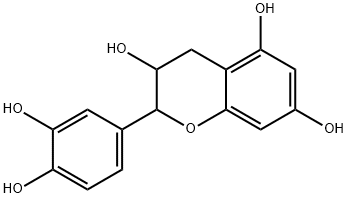

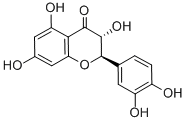
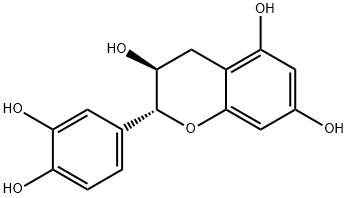
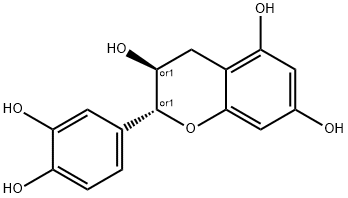
You may like
-
 DIHYDROMYRICETIN HCL 95-99%View Details
DIHYDROMYRICETIN HCL 95-99%View Details
27200-12-0 -
 Dihydromyricetin CAS 27200-12-0View Details
Dihydromyricetin CAS 27200-12-0View Details
27200-12-0 -
 Dihydromyricetin 98% (HPLC) CAS 27200-12-0View Details
Dihydromyricetin 98% (HPLC) CAS 27200-12-0View Details
27200-12-0 -
 Dihydromyricetin CAS 27200-12-0View Details
Dihydromyricetin CAS 27200-12-0View Details
27200-12-0 -
 52-52-8 Cycloleucine 98+View Details
52-52-8 Cycloleucine 98+View Details
52-52-8 -
 2756-85-6 98+View Details
2756-85-6 98+View Details
2756-85-6 -
 1-Aminocyclobutanecarboxylic acid 98+View Details
1-Aminocyclobutanecarboxylic acid 98+View Details
22264-50-2 -
![1841081-72-8 1-(2-Ethoxyethyl)-2-(piperidin-4-yl)-1H-benzo[d]imidazole hydrochloride 98+](https://img.chemicalbook.in//Content/image/CP5.jpg) 1841081-72-8 1-(2-Ethoxyethyl)-2-(piperidin-4-yl)-1H-benzo[d]imidazole hydrochloride 98+View Details
1841081-72-8 1-(2-Ethoxyethyl)-2-(piperidin-4-yl)-1H-benzo[d]imidazole hydrochloride 98+View Details
1841081-72-8